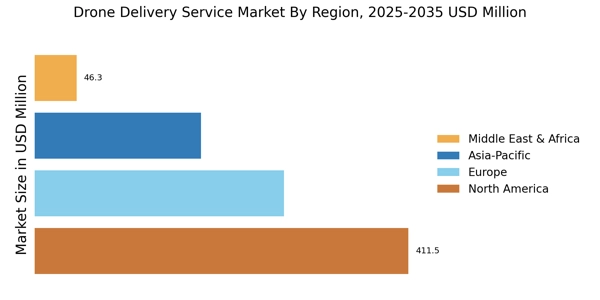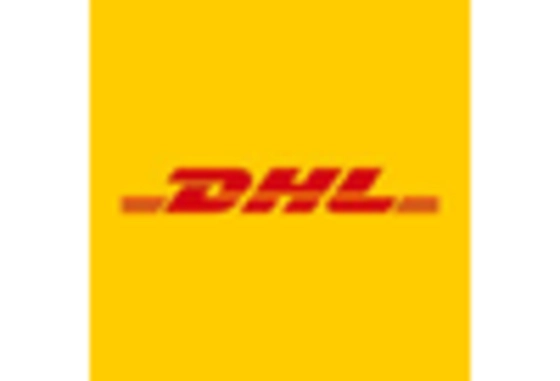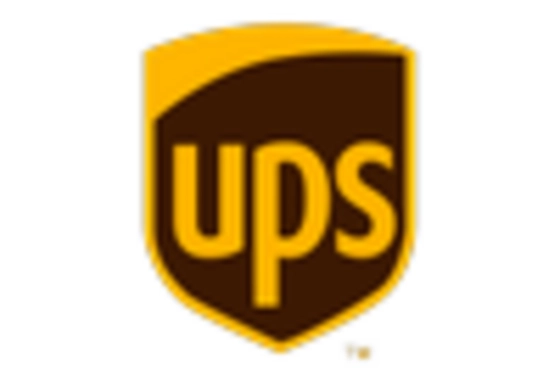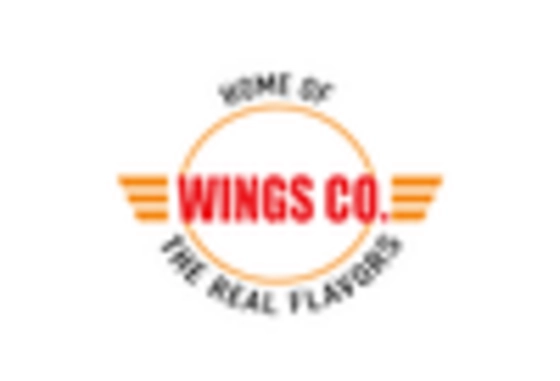The Drone Delivery Service Market is currently characterized by a dynamic competitive landscape, driven by technological advancements and increasing consumer demand for rapid delivery solutions. Major players such as Amazon (US), UPS (US), and Wing (US) are at the forefront, each adopting distinct strategies to enhance their market positioning. Amazon (US) continues to innovate with its Prime Air service, focusing on expanding its delivery network and improving operational efficiency through advanced drone technology. Meanwhile, UPS (US) emphasizes partnerships and collaborations, notably with the drone manufacturer Matternet (US), to enhance its logistics capabilities and reach underserved areas. Wing (US), a subsidiary of Alphabet, is strategically positioned to leverage its parent company's technological prowess, focusing on regulatory compliance and community engagement to facilitate smoother operations.
The business tactics employed by these companies reflect a concerted effort to optimize supply chains and localize operations. The market appears moderately fragmented, with a mix of established players and emerging startups vying for market share. This competitive structure is influenced by the collective actions of key players, who are increasingly focusing on sustainability and efficiency in their operations, thereby shaping the overall market dynamics.
In August 2025, Amazon (US) announced the launch of its new drone delivery service in select urban areas, aiming to reduce delivery times to under 30 minutes. This strategic move is significant as it not only enhances customer satisfaction but also positions Amazon as a leader in the rapid delivery segment, potentially increasing its market share in the competitive landscape. The emphasis on speed aligns with consumer expectations for immediate gratification, thereby reinforcing Amazon's commitment to innovation.
In September 2025, UPS (US) expanded its drone delivery pilot program in partnership with Matternet (US) to include healthcare facilities in rural regions. This initiative is crucial as it addresses the logistical challenges faced by healthcare providers, ensuring timely delivery of medical supplies. By focusing on healthcare, UPS not only diversifies its service offerings but also demonstrates a commitment to social responsibility, which may enhance its brand reputation and customer loyalty.
In October 2025, Wing (US) announced a collaboration with local governments to establish drone delivery zones in suburban areas. This strategic partnership is indicative of Wing's proactive approach to regulatory compliance and community integration. By working closely with local authorities, Wing aims to streamline operations and mitigate potential regulatory hurdles, thereby positioning itself favorably in the evolving regulatory landscape.
As of October 2025, the competitive trends in the Drone Delivery Service Market are increasingly defined by digitalization, sustainability, and the integration of artificial intelligence. Strategic alliances among key players are shaping the current landscape, fostering innovation and enhancing operational efficiencies. Looking ahead, it is likely that competitive differentiation will evolve, with a shift from price-based competition to a focus on technological innovation, reliability in supply chains, and sustainable practices. This evolution suggests that companies will need to continuously adapt and innovate to maintain their competitive edge in an increasingly complex market.


















Leave a Comment